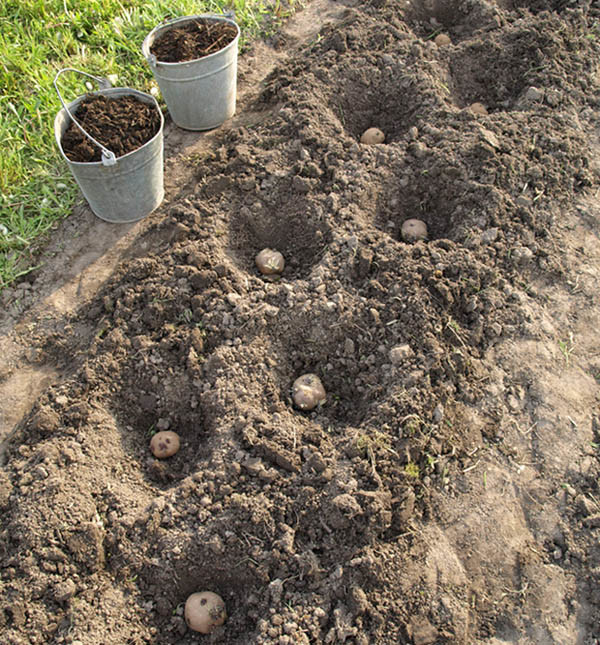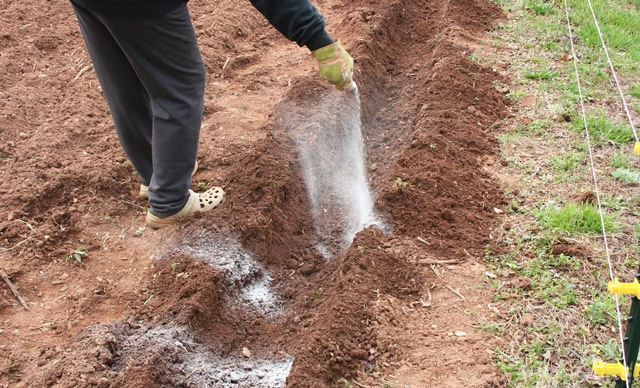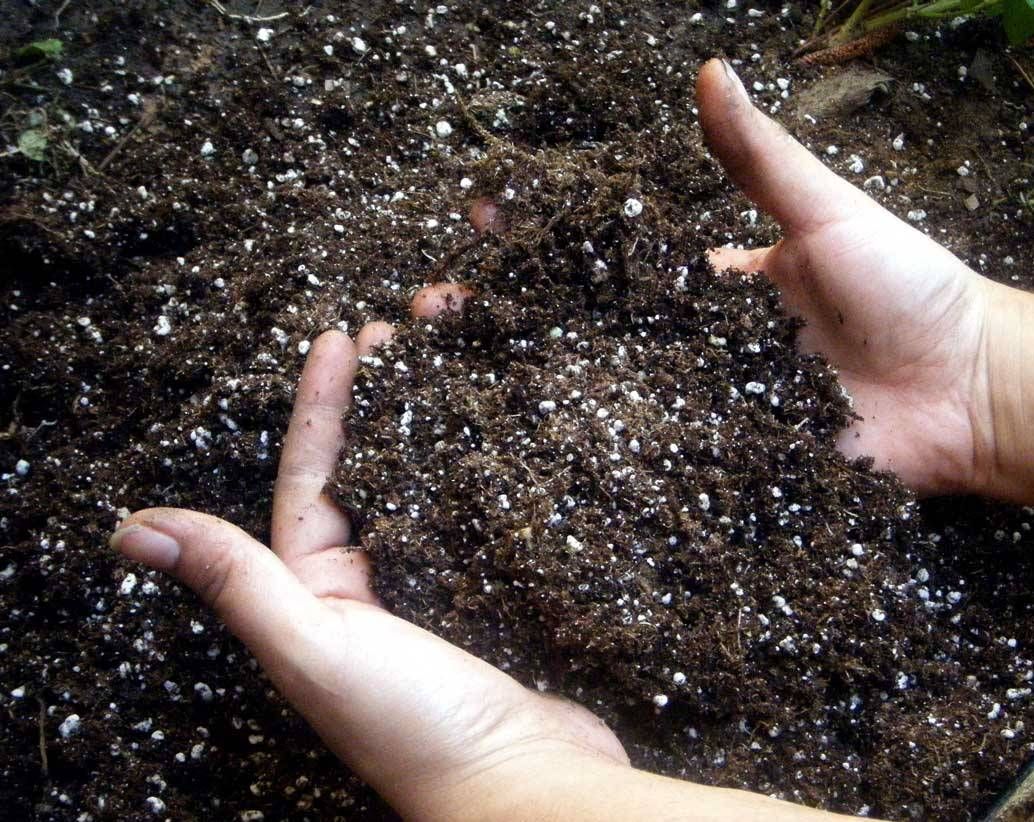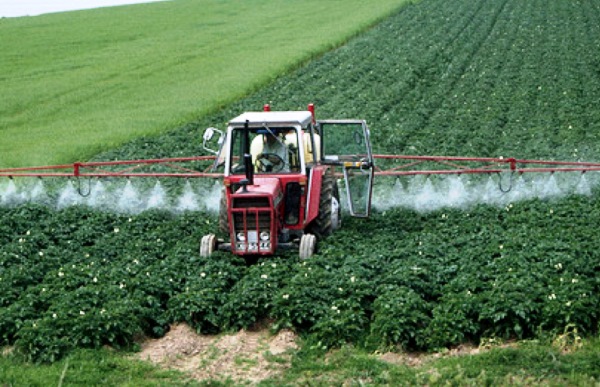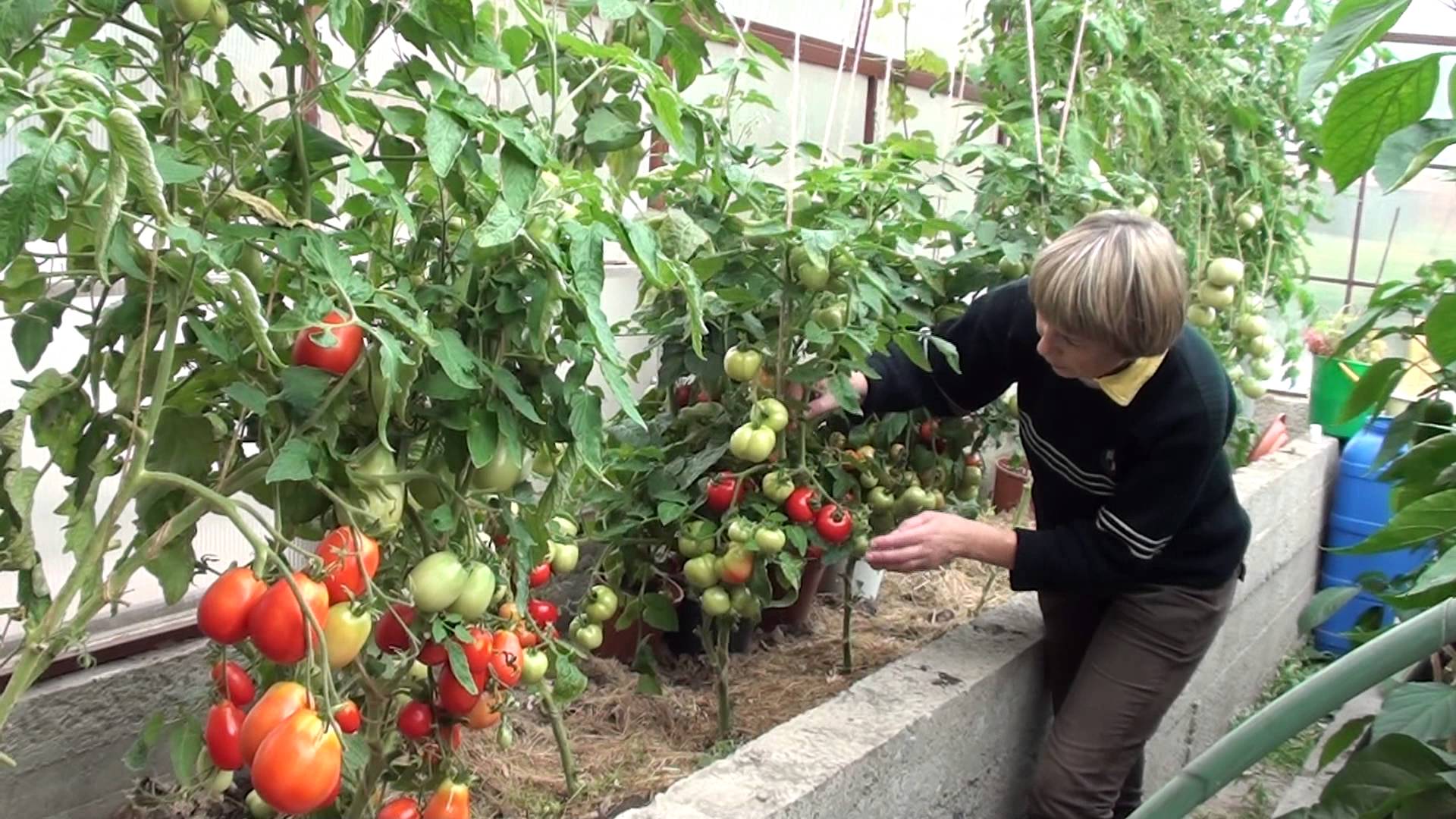Content:
There are different methods for planting potatoes, but planting in holes is considered the classic and most common. Fertilizing with this planting method is considered more economical and efficient than with continuous plowing of the field.
Planting potatoes in holes
Growing potatoes requires fertile soil. The soil contains a large number of microorganisms: worms, bacteria. During digging, the above-soil aerobic organisms deepen and die in the lower layer. And anaerobic microorganisms die when they rise from the ground to the surface. In this way, the balance is disturbed, the soil loses its microflora and becomes impoverished. In order for the plant to develop in the best way and bring good yields, an agrotechnical method is recommended, in which the soil is not dug up, but deeply loosened. After loosening with a special scribe, recesses are made - holes into which fertilizers should first be poured, then covered with earth so that the fertilizers do not touch the planting material. Then prepared potatoes are laid out in the hole. Then the holes are covered, the surface is harrowed with a rake. The potatoes can be planted in a linear or staggered pattern, with a distance of 40 cm. With staggered markings, the plants do not shade each other, and when the tops grow and close, they give shade in the aisles, which reduces the growth of weeds.
This planting method has one drawback, which can be considered a manual method of placing potatoes, without the possibility of using mechanization.
Potatoes take a lot of nutrients from the ground as they grow. The soil after growing potatoes on it becomes much poorer. When potatoes are re-planted in one place, they have nothing to eat, so it is impossible to harvest a good harvest without additional feeding.
Fertilizers for potatoes when planting in a hole in spring
Growing one potato bush will require at least 100 g of potassium, 50 g of nitrogen and 30 g of phosphorus. Nitrogen provides rapid growth, phosphorus promotes the development of roots and shoots, potassium enhances the culture's immunity to adverse conditions at different stages of culture development. The need for trace elements depends on the soil on which the potatoes are planted. On sandy and sandy loam soils, nitrogen and phosphorus are required to a greater extent. On heavy and loamy, there is a lack of nitrogen and potassium. On neutral soils, nitrogen in the form of carbamide is poorly absorbed, and its introduction in the form of ammonium sulfate or ammonium nitrate is required. On acidified soils, nitrogen is best used in the form of carbamide or urea.
Mineral fertilizers exist with one separate component, they also have a complex composition. Complex fertilizers are double and triple in terms of the composition of the components.
Effective mineral fertilizers for potatoes
- Calcium nitrate, or calcium nitrate, refers to nitrogen fertilizers. It is produced in the form of snow-white granules that can be used dry or diluted. The additive stimulates the growth of the root system and reduces the risk of root rot damage to tubers.It is effective to throw granules on podzolic soils, they do not acidify the soil, unlike urea and other nitrogen fertilizers. Calcium in the composition promotes the assimilation of nitrogen, reduces the acidity of the earth. It is not recommended to mix calcium nitrate with other drugs, including other nitrogenous ones;
- Nitroammofoska - complex complex fertilizer, which can be classified as universal. Available in different percentages of components. Contains a high concentration of three important elements: nitrogen, potassium and phosphorus. Nitroammofoska is a solid fertilizer produced in the form of gray or white-pink granules. The amount of water-soluble phosphates reaches 90%, which speeds up and simplifies the absorption of nutrients by plants, which are in the maximum amount in each fertilizer granule. Nitroammofosk is able to be well stored for a long time with resistance to caking, while the granules do not lose their friability. Fertilizer does not have any restrictions on soil types; it can have an acidifying effect only to a small extent. The required composition of dosages of nitroammofoska is able to increase the yield by half;
- Diammofoska - a complex, triple complex fertilizer with a content of 10% ammonium nitrogen, 26% phosphates and 26% potassium. The fertilizer may include sulfur, calcium, zinc, manganese, copper, iron and silicon. Produced in the form of homogeneous granules, without foreign inclusions.
Nitrogen, which is used in the form of ammonium, is practically not washed out from the soil, which minimizes its loss for plant nutrition. Phosphorus in the form of an oxide is well absorbed by the soil and tubers. The potassium component is mainly chlorine-free, in the form of potassium sulfate or potassium phosphate. The components in such formulations make it possible to classify the fertilizer as valuable and highly effective for growing potatoes.
Fertilizer should be placed in holes for basic nutrition, especially in old-growing impoverished lands. Suitable for a variety of soils and balancing, including sandstone and loam.
- Ammofoska - a universal complex fertilizer, equally containing three main elements: nitrogen, phosphorus and potassium, where the share of each is about 15%. It is produced in the form of gray granules. The composition does not contain aggressive elements such as sodium. The balanced composition of the components has a positive multilateral effect on the uniformity of growth and health of potatoes throughout the growing season. Due to the good solubility of the granules, nutrients are evenly distributed in the soil. The fertilizer is suitable for different types of soils and climatic zones, but it works best on clay, sandy, peat and bog soils;
- Specialized complex mineral fertilizers for potatoes. The effectiveness of such a mixture of various microelements lies in its balance and narrow focus specifically for the potato crop. Such a composition can be put into the soil without separately calculating the required trace elements.
Organic fertilizers when planting potatoes
Manure
The addition of any kind of manure is considered an effective natural fertilizer for potatoes when planted in a hole. Manure contains all the elements required for a good harvest: nitrogen, phosphorus and potassium. Manure should be added not fresh, so as not to burn the tubers, but rotted. Stale manure contains several times more nitrogen than fresh manure. Organic substances and trace elements are well absorbed by the plant. The nutritional effect of manure for the soil lasts for several seasons: on light soils - about 3 years, on heavy soils - up to 5 years. For fertilizing, slurry diluted with water in a ratio of 1: 4 is also used.
Mustard cake
An environmentally friendly organic fertilizer that is obtained after processing mustard seeds. Fertilizer is a powdery mass with large fractions. Mustard cake is superior in nutritional quality to organic matter such as humus, manure or compost.
Positive qualities of mustard cake:
- improves the quality of the soil, cleans the soil from rot, reduces the development of late blight;
- helps to get rid of various pests: wireworm, nematodes, may beetle, ants, scares away various rodents;
- does not contain weeds and pest larvae in the seeds, unlike, for example, manure.
When planting potatoes, add a handful of mustard cake to the hole and mix with the soil. Together with such a fertilizer, it is useful to grow mustard in a potato field after harvest. The use of both means in a complex can effectively improve the health and increase the fertility of the soil.
Ash
Ash left over from burning wood contains potassium and phosphorus. When planting in a hole, you need to throw a tablespoon of ash and sprinkle with soil, only then put the tubers. It is important that the potato does not come into contact with the ash. An excess of ash is harmful because it retains moisture in the soil, thereby provoking the appearance of diseases. Ash alone is not enough to fertilize potatoes; it should be used as an addition to other fertilizers.
When potatoes are planted, the ash is mainly used together with manure. Organic and mineral fertilizers can be effectively used together.
Fertilizers with poor germination of potatoes
With poor germination, several additional dressings are carried out after the emergence of sprouts. Before the first hilling for fertilization, the soil is easily loosened, for greater penetration of nutrients. From organic means, slurry is used, diluted with water 1:10 bird droppings or herbal infusion. Fertilizer herb is infused for one week and then, diluted with water, is poured under potato bushes. Then the potatoes are mulched with cut grass or peat.
The use of calcium nitrate replenishes the need for nitrogen and calcium in the germination phase.
Fertilizer is applied a second time before flowering. During this period, potash-phosphorus fertilizers will be required, which are part of superphosphate or any other potassium fertilizer, but without chlorine. Fertilizer granules are scattered or solutions are prepared with them. After making the compositions, the potatoes are watered so that the fertilizers quickly penetrate into the soil.
Ammofoska can be used as the main and additional fertilizer for feeding. It is important to strictly adhere to the norms of the applied fertilizers indicated on the packaging.
Potatoes are able to assimilate fertilizers not only through the roots, but also through the leaves. For fertilization after planting, foliar dressing is used. The physiological feature of potatoes is that when fertilizing the green part of the plant, tubers begin to actively develop. Seedlings are sprayed with a carbamide solution, also called urea. Foliar feeding is carried out in the evening. Foliar dressing is effective before budding and flowering.
To ensure the growth of green mass under unfavorable growing conditions, it is useful to buy the Nutrivant universal fertilizer. Foliar feeding can compensate for the lack of nutrients.
After sprouting, phosphate rock or bone meal is used, 300 g of flour is used per 10 liters of water.
Potatoes - a culture whimsical to the conditions of soil fertility. It is a mistake to think that potatoes will grow in any soil.In order to get a good harvest, you should monitor the quality of the soil, apply top dressing and fertilizers in a timely manner, know how much to add mineral elements during planting and throughout the growing season.
